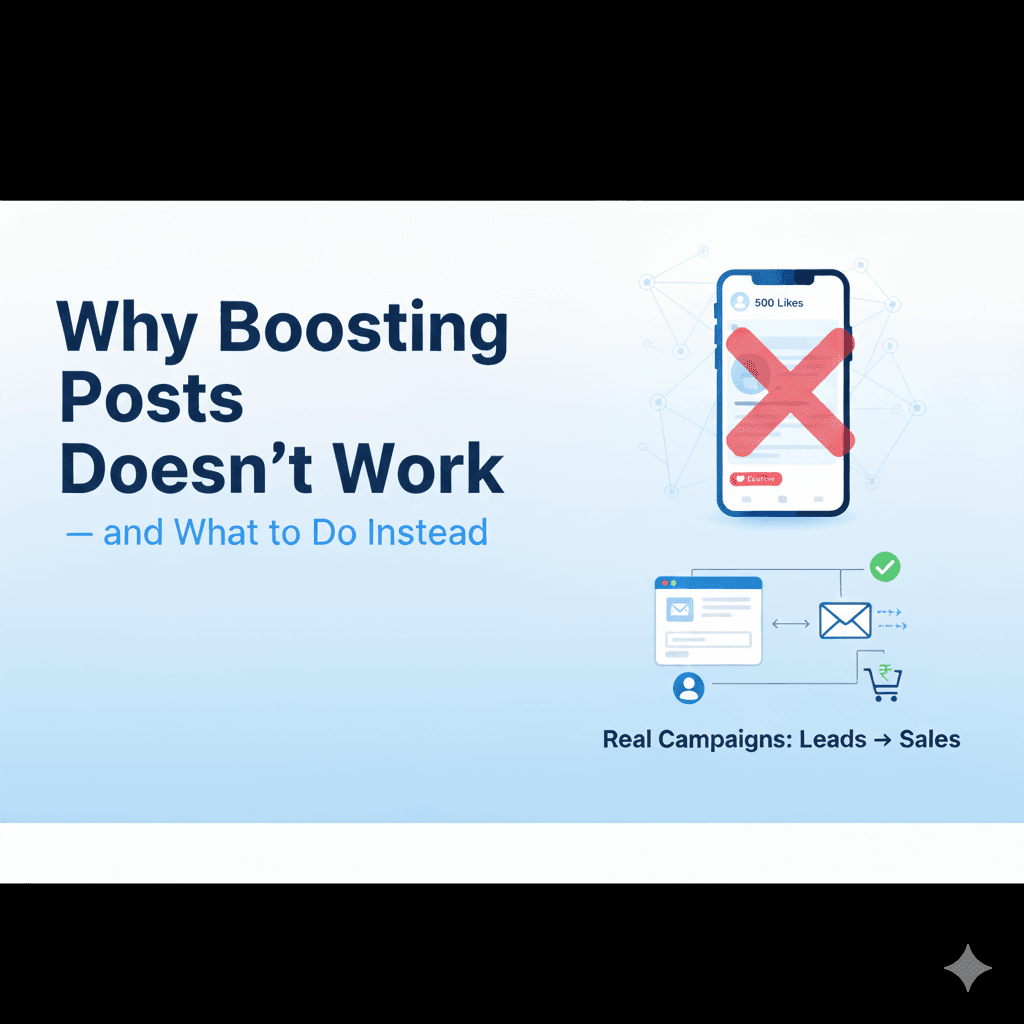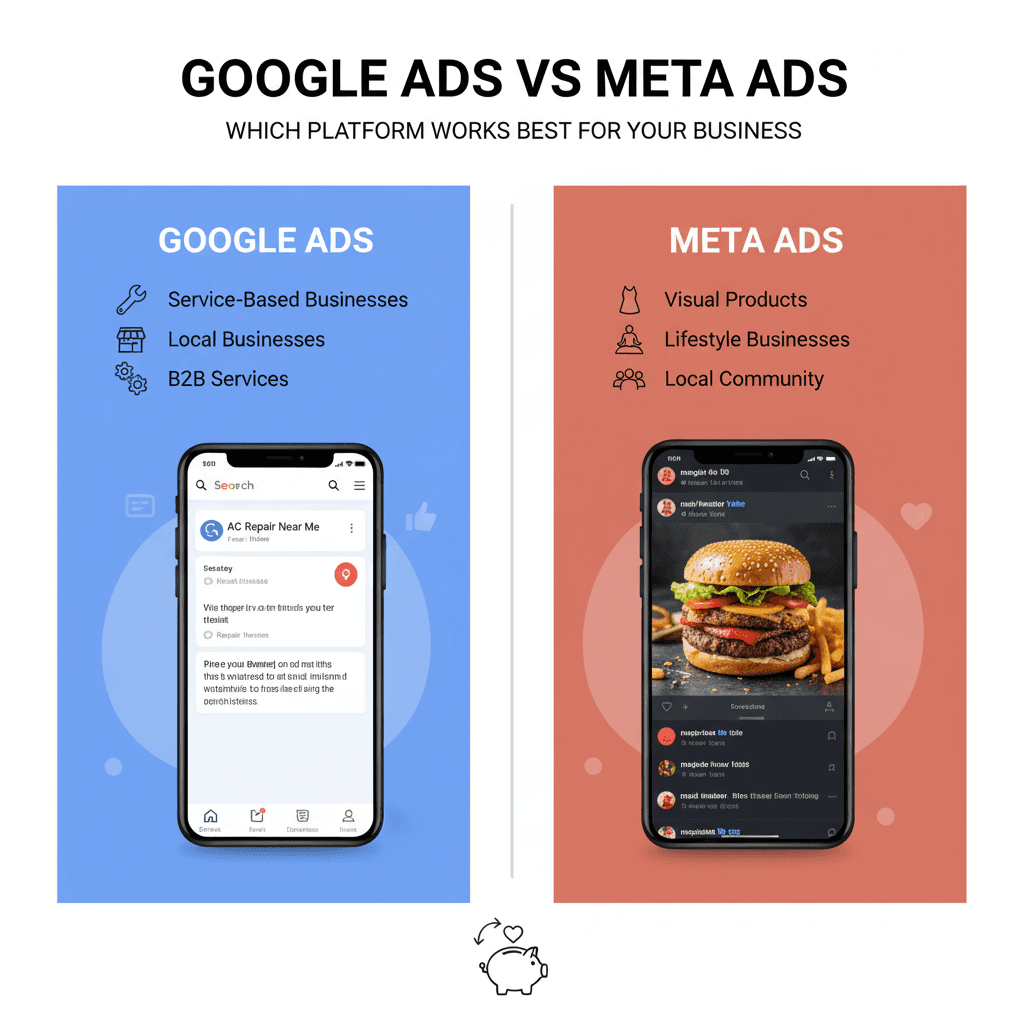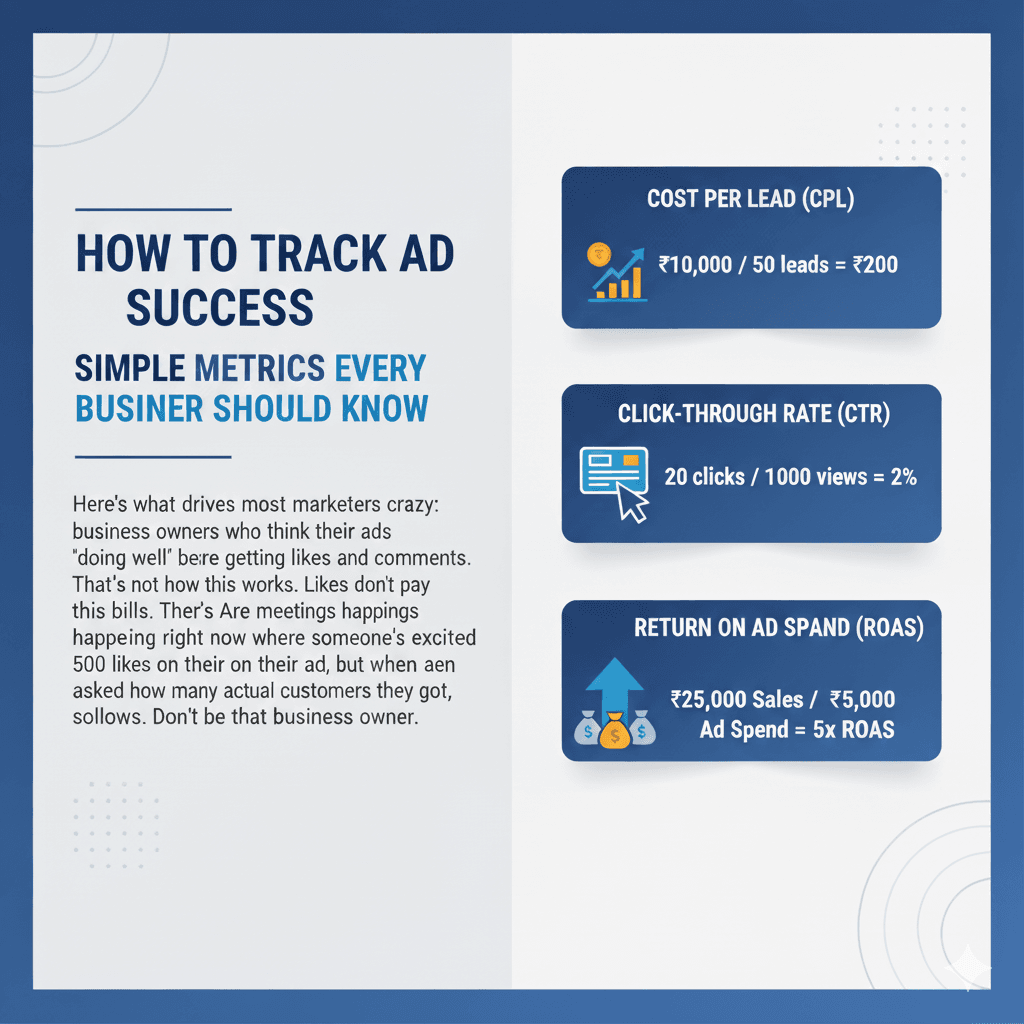Why Boosting Posts Doesn’t Work — and What to Do Instead
Fri Sep 26 2025
·3 min read

- Why Boosting Posts Doesn’t Work — and What to Do Instead
- The Boosting Trap Most Businesses Fall Into
- What’s Actually Broken About Boosting
- How Real Performance Campaigns Actually Work
- The Landing Page Game Changer
- The Follow-Up System That Changes Everything
- Why Most Businesses Stick with Boosting Anyway
- Making the Switch Without Losing Your Mind
- The Uncomfortable Truth About Social Media Marketing
- Moving Beyond Hope-Based Marketing
Why Boosting Posts Doesn’t Work — and What to Do Instead
Ever notice how business owners get excited when their boosted posts get hundreds of likes? Then, a few months later, they’re wondering why their phone isn’t ringing?
Here’s what actually happens: boosting posts feels productive, but it rarely turns into paying customers. Meanwhile, businesses working with marketing consulting companies and performance marketing agencies are quietly booking appointments and making sales.
The Boosting Trap Most Businesses Fall Into
Boosting posts seems logical. A post gets some engagement organically, so paying to show it to more people should bring more business, right? Wrong.
Most boosted posts are optimized for the wrong goal. The platform shows them to people who like to engage with content, not necessarily to people who want to buy. There’s a big difference between someone who clicks ‘like’ and someone who pulls out their wallet.
Marketing consultants learned this lesson years ago. Engagement doesn’t pay the bills. Customers do.
What’s Actually Broken About Boosting
The targeting system behind boosted posts is basically guesswork. The platform looks at who engaged with the original post and tries to find similar people. But those similar people might live far away or have no real interest in buying anything.
Plus, boosting doesn’t let you control where ads appear. They might show up in a quick, mindless scroll through Stories or in someone’s feed when they’re not in buying mode. There’s no way to optimize for the best placements.
Then there’s the follow-up problem. Someone might see the boosted post and visit your website — but there’s usually no system in place to bring them back. They disappear forever. Marketing experts call this “leaky funnel syndrome” — traffic comes in, but nothing captures it.
How Real Performance Campaigns Actually Work
Professional campaigns run by a performance marketing agency in Kerala or other regions start with one simple question: what specific action should people take after seeing this ad?
Should they visit a landing page? Call a phone number? Fill out a contact form? Everything is built around that clear action.
Targeting is completely different too. Instead of showing ads to people who might engage, the focus is on people who actually need what’s being sold. New homeowners for interior designers, business owners for accounting services, parents with young kids for family photographers.
Top digital marketing companies and best digital marketing companies spend hours researching these audiences — looking at demographics, interests, recent life events, and purchasing behavior — anything that indicates someone might buy.
The Landing Page Game Changer
Here’s where boosting really falls short. Most boosted posts send people to a Facebook page or a website homepage. Then what? People have to figure out what to do next.
Structured campaigns send traffic to dedicated landing pages built for one purpose: getting contact information or making a sale. No distractions, no confusion. Just a clear path from ad to customer.
These landing pages match the ad exactly. If the ad talks about a “free kitchen design consultation,” the landing page is all about that free consultation — no irrelevant content.
Top marketers obsess over these pages because small changes can double or triple conversion rates. Different headlines, button colors, form lengths — everything gets tested.
The Follow-Up System That Changes Everything
Most businesses lose 70-80% of potential customers because they don’t follow up properly. Someone visits the website but doesn’t call immediately? Gone forever.
Smart campaigns fix this with retargeting. Those website visitors start seeing ads again within days, often with special offers or more information about the service. It’s like having a salesperson who never gives up.
This is where the real magic happens. The best results often come from these follow-up ads, not the original ones. People need multiple touchpoints before they buy, especially for higher-priced services.
Why Most Businesses Stick with Boosting Anyway
Boosting is comfortable. Click a button, pick a budget, watch the likes roll in. It feels like progress without requiring much thought or planning.
Structured campaigns require decisions: What’s the goal? Who’s the ideal customer? What should the landing page say? What happens after someone inquires? Many business owners avoid this complexity.
But complexity upfront leads to simplicity later. Once a structured campaign works, it becomes a predictable customer-generation machine. Spend a budget, get leads, close customers — repeat monthly.
Making the Switch Without Losing Your Mind
Start small. Pick one product or service and create one campaign focused on generating leads for that specific thing. Don’t try to advertise everything at once.
Create a simple landing page that matches the ad — same language, same offer, same look. Make it obvious what people should do next.
Set up basic tracking so it’s clear which ads generate actual business, not just engagement. Tools like Google Analytics and Facebook Pixel handle most of this automatically.
Many marketing consulting agencies recommend running both approaches at first — keep boosting posts that get good organic engagement while testing structured campaigns for lead generation. Once the structured approach proves itself, gradually shift more budget there.
The Uncomfortable Truth About Social Media Marketing
Most business owners want social media marketing to work like traditional advertising: create something once, pay to show it to people, hope they remember the business later.
Digital advertising works differently. It’s about starting conversations, capturing interest immediately, and following up systematically until people are ready to buy.
The businesses winning online have figured out this difference. They use social media platforms as sophisticated customer acquisition systems, not digital billboards.
Moving Beyond Hope-Based Marketing
Boosting posts is hope-based marketing. Hope more people see it, hope they remember the business, hope they eventually make contact.
Structured campaigns are system-based marketing. Specific targeting brings in qualified traffic. Dedicated landing pages convert that traffic into leads. Follow-up systems turn those leads into customers.
The difference shows up in bank accounts, not engagement reports. Marketing companies that focus on real business results consistently deliver better outcomes.
Stop hoping social media will magically generate customers. Start building systems that reliably turn advertising spend into business growth.




